541 low relevance results shown for 'Red'. Prev |1|2|3|4|5|6|7|8|9|10|11|12|13|14|15|16|17|18|19|20|21|22 | Next | View 100 per page
Showing low relevance matches only. Return to normal search results
DNA - The transmission of heritable characteristics from one generation to the next involves DNA and genes ACSSU097 Year 6 Physical Sciences
Electrical Circuits - Electrical energy can be transferred and transformed in electrical circuits and can be generated from a range of sources ACSSU115 Year 7 Earth and Space Sciences
Earth Moon Sun - Predictable phenomena on Earth, including seasons and eclipses, are caused by the relative positions of the sun, Earth and the moon ACSSU229 Year 10 Physical Sciences
Forces and Motion - The motion of objects can be described and predicted using the laws of physics ACSBL029 Year 11 Biodiversity and the interconnectedness of life
Ecosystem dynamics - Models of ecosystem interactions (for example, food webs, successional models) can be used to predict the impact of change and are based on interpretation of and extrapolation from sample data (for example, data derived from ecosystem surveying techniques ACSBL085 Year 12 Heredity and continuity of life
DNA genes and the continuity of life - Frequencies of genotypes and phenotypes of offspring can be predicted using probability models, including Punnett squares, and by taking into consideration patterns of inheritance, including the effects of dominant, autosomal and sex-linked alleles and mu ACSBL090 Year 12 Heredity and continuity of life
Continuity of life on Earth - Natural selection occurs when selection pressures in the environment confer a selective advantage on a specific phenotype to enhance its survival and reproduction; this results in changes in allele frequency in the gene pool of a population ACSBL091 Year 12 Heredity and continuity of life
Continuity of life on Earth - In additional to environmental selection pressures, mutation, gene flow and genetic drift can contribute to changes in allele frequency in a population gene pool and results in microevolutionary change ACSCH056 Year 11 Molecular interactions and reactions
Intermolecular forces and gases - The shapes of molecules can be explained and predicted using three dimensional representations of electrons as charge clouds and using valence shell electron pair repulsion (VSEPR) theory ACSCH073 Year 11 Molecular interactions and reactions
Rates of chemical reactions - Catalysts, including enzymes and metal nanoparticles, affect the rate of certain reactions by providing an alternative reaction pathway with a reduced activation energy, hence increasing the proportion of collisions that lead to a chemical change ACSCH091 Year 12 Equilibrium acids and redox reactions
Chemical equilibrium systems - Over time, physical changes and reversible chemical reactions reach a state of dynamic equilibrium in a closed system, with the relative concentrations of products and reactants defining the position of equilibrium ACSCH096 Year 12 Equilibrium acids and redox reactions
Chemical equilibrium systems - Equilibrium position can be predicted qualitatively using equilibrium constants ACSCH097 Year 12 Equilibrium acids and redox reactions
Chemical equilibrium systems - Acids are substances that can act as proton (hydrogen ion) donors and can be classified as monoprotic or polyprotic depending on the number of protons donated by each molecule of the acid ACSCH098 Year 12 Equilibrium acids and redox reactions
Chemical equilibrium systems - The strength of acids is explained by the degree of ionisation at equilibrium in aqueous solution, which can be represented with chemical equations and equilibrium constants (Ka) ACSCH099 Year 12 Equilibrium acids and redox reactions
Chemical equilibrium systems - The relationship between acids and bases in equilibrium systems can be explained using the Brønsted Lowry model and represented using chemical equations that illustrate the transfer of hydrogen ions ACSCH100 Year 12 Equilibrium acids and redox reactions
Chemical equilibrium systems - The pH scale is a logarithmic scale and the pH of a solution can be calculated from the concentration of hydrogen ions; Kw can be used to calculate the concentration of hydrogen ions from the concentration of hydroxide ions in a solution ACSCH101 Year 12 Equilibrium acids and redox reactions
Chemical equilibrium systems - Acidbase indicators are weak acids or bases where the acidic form is of a different colour to the basic form ACSCH102 Year 12 Equilibrium acids and redox reactions
Chemical equilibrium systems - Volumetric analysis methods involving acidbase reactions rely on the identification of an equivalence point by measuring the associated change in pH, using chemical indicators or pH meters, to reveal an observable end point ACSCH103 Year 12 Equilibrium acids and redox reactions
Oxidation and reduction - A range of reactions, including displacement reactions of metals, combustion, corrosion, and electrochemical processes, can be modelled as redox reactions involving oxidation of one substance and reduction of another substance ACSCH104 Year 12 Equilibrium acids and redox reactions
Oxidation and reduction - Oxidation can be modelled as the loss of electrons from a chemical species, and reduction can be modelled as the gain of electrons by a chemical species; these processes can be represented using half equations ACSCH106 Year 12 Equilibrium acids and redox reactions
Oxidation and reduction - The relative strength of oxidising and reducing agents can be determined by comparing standard electrode potentials ACSCH107 Year 12 Equilibrium acids and redox reactions
Oxidation and reduction - Electrochemical cells, including galvanic and electrolytic cells, consist of oxidation and reduction half reactions connected via an external circuit that allows electrons to move from the anode (oxidation reaction) to the cathode (reduction reaction) ACSCH108 Year 12 Equilibrium acids and redox reactions
Oxidation and reduction - Galvanic cells, including fuel cells, generate an electrical potential difference from a spontaneous redox reaction; they can be represented as cell diagrams including anode and cathode halfequations ACSCH110 Year 12 Equilibrium acids and redox reactions
Oxidation and reduction - Cell potentials at standard conditions can be calculated from standard electrode potentials; these values can be used to compare cells constructed from different materials ACSCH130 Year 12 Structure synthesis and design
Properties and structure of organic materials - Data from analytical techniques, including mass spectrometry, xray crystallography and infrared spectroscopy, can be used to determine the structure of organic molecules, often using evidence from more than one technique ACSPH040 Year 11 Thermal nuclear and electrical physics
Electrical circuits - The energy available to charges moving in an electrical circuit is measured using electric potential difference, which is defined as the change in potential energy per unit charge between two defined points in the circuit ACSPH041 Year 11 Thermal nuclear and electrical physics
Electrical circuits - Energy is required to separate positive and negative charge carriers; charge separation produces an electrical potential difference that can be used to drive current in circuits ACSPH061 Year 11 Linear Motion and Waves
Linear motion and force - Representations, including graphs and vectors, and/or equations of motion, can be used qualitatively and quantitatively to describe and predict linear motion ACSPH064 Year 11 Linear Motion and Waves
Linear motion and force - Momentum is a property of moving objects; it is conserved in a closed system and may be transferred from one object to another when a force acts over a time interval ACSPH065 Year 11 Linear Motion and Waves
Linear motion and force - Energy is conserved in isolated systems and is transferred from one object to another when a force is applied over a distance; this causes work to be done and changes to kinetic and/or potential energy of objects ACSPH073 Year 11 Linear Motion and Waves
Waves - A mechanical system resonates when it is driven at one of its natural frequencies of oscillation; energy is transferred efficiently into systems under these conditions ACSPH076 Year 11 Linear Motion and Waves
Waves - A wave model explains a wide range of lightrelated phenomena including reflection, refraction, total internal reflection, dispersion, diffraction and interference; a transverse wave model is required to explain polarisation ACSPH021 Year 11 Thermal nuclear and electrical physics
Heating processes - Change of state involves internal energy changes to form or break bonds between atoms or molecules; latent heat is the energy required to be added to or removed from a system to change the state of the system
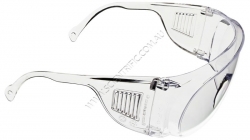
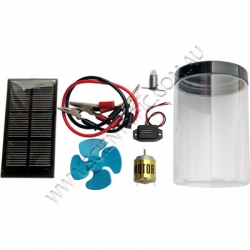
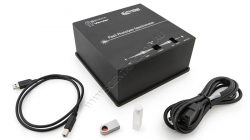
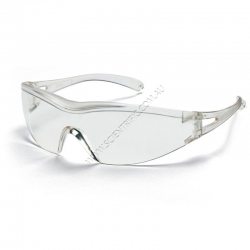
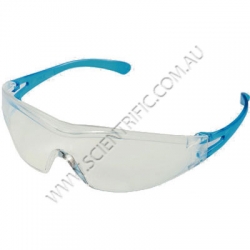
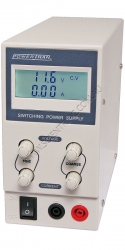
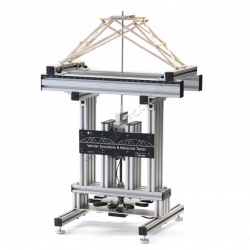
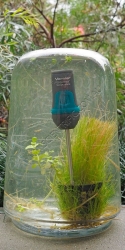
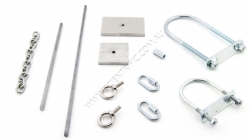
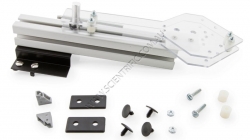
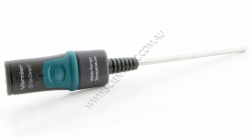
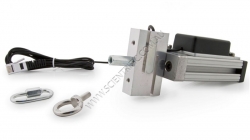
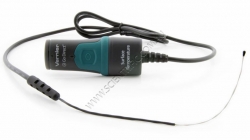

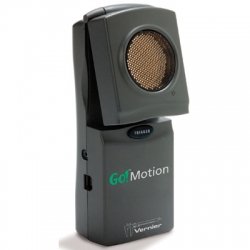

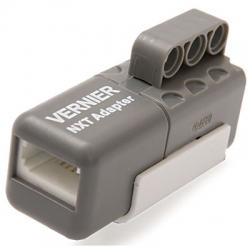
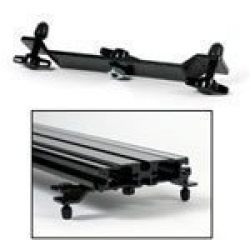
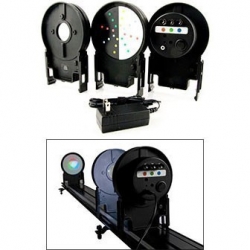
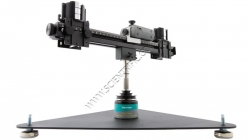
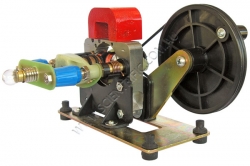
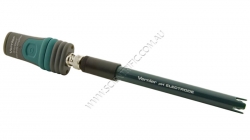
541 low relevance results shown for 'Red'. Prev |1|2|3|4|5|6|7|8|9|10|11|12|13|14|15|16|17|18|19|20|21|22 | Next | View 100 per page
Showing low relevance matches only. Return to normal search results
Curriculum resources related to 'Red'
ACSSU184 Year 10 Biological SciencesDNA - The transmission of heritable characteristics from one generation to the next involves DNA and genes ACSSU097 Year 6 Physical Sciences
Electrical Circuits - Electrical energy can be transferred and transformed in electrical circuits and can be generated from a range of sources ACSSU115 Year 7 Earth and Space Sciences
Earth Moon Sun - Predictable phenomena on Earth, including seasons and eclipses, are caused by the relative positions of the sun, Earth and the moon ACSSU229 Year 10 Physical Sciences
Forces and Motion - The motion of objects can be described and predicted using the laws of physics ACSBL029 Year 11 Biodiversity and the interconnectedness of life
Ecosystem dynamics - Models of ecosystem interactions (for example, food webs, successional models) can be used to predict the impact of change and are based on interpretation of and extrapolation from sample data (for example, data derived from ecosystem surveying techniques ACSBL085 Year 12 Heredity and continuity of life
DNA genes and the continuity of life - Frequencies of genotypes and phenotypes of offspring can be predicted using probability models, including Punnett squares, and by taking into consideration patterns of inheritance, including the effects of dominant, autosomal and sex-linked alleles and mu ACSBL090 Year 12 Heredity and continuity of life
Continuity of life on Earth - Natural selection occurs when selection pressures in the environment confer a selective advantage on a specific phenotype to enhance its survival and reproduction; this results in changes in allele frequency in the gene pool of a population ACSBL091 Year 12 Heredity and continuity of life
Continuity of life on Earth - In additional to environmental selection pressures, mutation, gene flow and genetic drift can contribute to changes in allele frequency in a population gene pool and results in microevolutionary change ACSCH056 Year 11 Molecular interactions and reactions
Intermolecular forces and gases - The shapes of molecules can be explained and predicted using three dimensional representations of electrons as charge clouds and using valence shell electron pair repulsion (VSEPR) theory ACSCH073 Year 11 Molecular interactions and reactions
Rates of chemical reactions - Catalysts, including enzymes and metal nanoparticles, affect the rate of certain reactions by providing an alternative reaction pathway with a reduced activation energy, hence increasing the proportion of collisions that lead to a chemical change ACSCH091 Year 12 Equilibrium acids and redox reactions
Chemical equilibrium systems - Over time, physical changes and reversible chemical reactions reach a state of dynamic equilibrium in a closed system, with the relative concentrations of products and reactants defining the position of equilibrium ACSCH096 Year 12 Equilibrium acids and redox reactions
Chemical equilibrium systems - Equilibrium position can be predicted qualitatively using equilibrium constants ACSCH097 Year 12 Equilibrium acids and redox reactions
Chemical equilibrium systems - Acids are substances that can act as proton (hydrogen ion) donors and can be classified as monoprotic or polyprotic depending on the number of protons donated by each molecule of the acid ACSCH098 Year 12 Equilibrium acids and redox reactions
Chemical equilibrium systems - The strength of acids is explained by the degree of ionisation at equilibrium in aqueous solution, which can be represented with chemical equations and equilibrium constants (Ka) ACSCH099 Year 12 Equilibrium acids and redox reactions
Chemical equilibrium systems - The relationship between acids and bases in equilibrium systems can be explained using the Brønsted Lowry model and represented using chemical equations that illustrate the transfer of hydrogen ions ACSCH100 Year 12 Equilibrium acids and redox reactions
Chemical equilibrium systems - The pH scale is a logarithmic scale and the pH of a solution can be calculated from the concentration of hydrogen ions; Kw can be used to calculate the concentration of hydrogen ions from the concentration of hydroxide ions in a solution ACSCH101 Year 12 Equilibrium acids and redox reactions
Chemical equilibrium systems - Acidbase indicators are weak acids or bases where the acidic form is of a different colour to the basic form ACSCH102 Year 12 Equilibrium acids and redox reactions
Chemical equilibrium systems - Volumetric analysis methods involving acidbase reactions rely on the identification of an equivalence point by measuring the associated change in pH, using chemical indicators or pH meters, to reveal an observable end point ACSCH103 Year 12 Equilibrium acids and redox reactions
Oxidation and reduction - A range of reactions, including displacement reactions of metals, combustion, corrosion, and electrochemical processes, can be modelled as redox reactions involving oxidation of one substance and reduction of another substance ACSCH104 Year 12 Equilibrium acids and redox reactions
Oxidation and reduction - Oxidation can be modelled as the loss of electrons from a chemical species, and reduction can be modelled as the gain of electrons by a chemical species; these processes can be represented using half equations ACSCH106 Year 12 Equilibrium acids and redox reactions
Oxidation and reduction - The relative strength of oxidising and reducing agents can be determined by comparing standard electrode potentials ACSCH107 Year 12 Equilibrium acids and redox reactions
Oxidation and reduction - Electrochemical cells, including galvanic and electrolytic cells, consist of oxidation and reduction half reactions connected via an external circuit that allows electrons to move from the anode (oxidation reaction) to the cathode (reduction reaction) ACSCH108 Year 12 Equilibrium acids and redox reactions
Oxidation and reduction - Galvanic cells, including fuel cells, generate an electrical potential difference from a spontaneous redox reaction; they can be represented as cell diagrams including anode and cathode halfequations ACSCH110 Year 12 Equilibrium acids and redox reactions
Oxidation and reduction - Cell potentials at standard conditions can be calculated from standard electrode potentials; these values can be used to compare cells constructed from different materials ACSCH130 Year 12 Structure synthesis and design
Properties and structure of organic materials - Data from analytical techniques, including mass spectrometry, xray crystallography and infrared spectroscopy, can be used to determine the structure of organic molecules, often using evidence from more than one technique ACSPH040 Year 11 Thermal nuclear and electrical physics
Electrical circuits - The energy available to charges moving in an electrical circuit is measured using electric potential difference, which is defined as the change in potential energy per unit charge between two defined points in the circuit ACSPH041 Year 11 Thermal nuclear and electrical physics
Electrical circuits - Energy is required to separate positive and negative charge carriers; charge separation produces an electrical potential difference that can be used to drive current in circuits ACSPH061 Year 11 Linear Motion and Waves
Linear motion and force - Representations, including graphs and vectors, and/or equations of motion, can be used qualitatively and quantitatively to describe and predict linear motion ACSPH064 Year 11 Linear Motion and Waves
Linear motion and force - Momentum is a property of moving objects; it is conserved in a closed system and may be transferred from one object to another when a force acts over a time interval ACSPH065 Year 11 Linear Motion and Waves
Linear motion and force - Energy is conserved in isolated systems and is transferred from one object to another when a force is applied over a distance; this causes work to be done and changes to kinetic and/or potential energy of objects ACSPH073 Year 11 Linear Motion and Waves
Waves - A mechanical system resonates when it is driven at one of its natural frequencies of oscillation; energy is transferred efficiently into systems under these conditions ACSPH076 Year 11 Linear Motion and Waves
Waves - A wave model explains a wide range of lightrelated phenomena including reflection, refraction, total internal reflection, dispersion, diffraction and interference; a transverse wave model is required to explain polarisation ACSPH021 Year 11 Thermal nuclear and electrical physics
Heating processes - Change of state involves internal energy changes to form or break bonds between atoms or molecules; latent heat is the energy required to be added to or removed from a system to change the state of the system
Products related to 'Red'

Safety Glasses Clear Lens
PRO EYEWEAR SAFETY GLASSES
Large protective clear student safety glasses providing a wide field of view,. They have a single wraparound polycarbonate lens with integral side shields and contoured nose bridge. The indirect vent helps prevent fogging.
It is important fo...
Order code: SC4954
| Purchase QTY: (Each) | 1+ |
|---|---|
| Scientrific's price | $6.80 |
| CLICK FOR QTY PRICING | |
| Prices exclude GST and freight | |

Solar Power and Energy Transformation Kit
An economic and engaging kit for students to examine how a solar cell can be used to power three different devices and see the conversion of light energy into into electrical energy which is then converted into:
Mechanical energy: ... to run a fan and to push air from one place ...
Order code: SC7250

Vernier Flash Photolysis Spectrometer
VERNIER FLASH PHOTOLYSIS SPECTROMETER
Photochemical reactions are very important in many areas of chemistry with applications including photodynamic therapy and solar energy harvesting. These reactions often proceed quickly and as a result require fast reaction techniques...
Order code: VSP-FP

Safety Glasses UVEX X-One Clear Arms
UVEX X-ONE SAFETY GLASSES WITH CLEAR ARMS
Quality German manufactured Uvex safety glasses that feature hard coat, scratch and chemical resistant lenses. Similar to SC4962 except the stylish slimline wrap around arms are clear.
These safety glasses are AS1337 compliant....
Order code: SC4960
| Purchase QTY: (Each) | 1+ |
|---|---|
| Scientrific's price | $8.80 |
| CLICK FOR QTY PRICING | |
| Prices exclude GST and freight | |

Safety Glasses UVEX X-One Blue Arms
UVEX X-ONE SAFETY GLASSES WITH BLUE ARMS
German manufactured Uvex safety glasses that feature hard coat, scratch and chemical resistant lenses. The stylish slimline wrap around blue arms are popular with students.
These safety glasses are AS1337 compliant. It is import...
Order code: SC4962
| Purchase QTY: (Each) | 1+ |
|---|---|
| Scientrific's price | $10.00 |
| CLICK FOR QTY PRICING | |
| Prices exclude GST and freight | |

Power Supply 0-30V 0-5A Regulated
POWER SUPPLY 0-30V 0-5A REGULATED.
A compact, efficient bench top power supply for use in servicing, repair and design of electronics. The low noise switchmode design offers excellent regulation for low current requirements. Fine/coarse voltage and current controls allow ...
Order code: SC2292

Vernier Structures & Materials Tester
Discontinued
VERNIER STRUCTURES AND MATERIALS TESTER Evaluate the strength of model bridges and engineered structures by measuring the applied load with the Vernier Structures and Materials Tester. Utilizing both load and displacement sensors allows students to evaluate properties of ... Order code: VSMT
VERNIER STRUCTURES AND MATERIALS TESTER Evaluate the strength of model bridges and engineered structures by measuring the applied load with the Vernier Structures and Materials Tester. Utilizing both load and displacement sensors allows students to evaluate properties of ... Order code: VSMT

Vernier Go Direct Temperature Teacher Pack
VERNIER GO DIRECT TEMPERATURE PROBE TEACHER PACK
Buy more and save. With Vernier's Go Direct Temperature Teacher Pack you receive eight Vernier Go Direct Temperature Probes and a convenient charging station that allows you to charge the eight Go Direct Temperature Probes ...
Order code: GDX-TMP-TP-INTL

Vernier Structure and Materials Tester (VSMT) Tackle Kit
VERNIER VSMT TACKLE KIT
This Tackle Kit is supplied with Vernier Structures and Materials Testers and includes accessories to make it quick and easy to load bridges, materials, beams and structures of varying sizes and shapes.
It may be useful to purchase an additional...
Order code: VSMT-TK

Vernier Truss Tester Accessory
VERNIER TRUSS TESTER ACCESSORY
The Truss Tester Accessory for Vernier Structures and Materials Testers provides a fast and effective method to evaluate the strength of trusses. Students use the tester to collect data that allows them to evaluate parameters affecting truss...
Order code: VSMT-TRUSS

Vernier Go Direct Wide Range Temperature Probe
VERNIER GO DIRECT WIDE RANGE TEMPERATURE PROBE
Measuring the temperature of a distillation has never been safer — your students can conduct an experiment within the laboratory fume hood while collecting data at their lab station. The Vernier Go Direct Wide-Range Temperatu...
Order code: GDX-WRT

Vernier VSMT Force Cell
VERNIER VSMT REPLACEMENT FORCE CELL
This is a replacement force cell for the original VSMT Vernier Structures and Materials Tester not the GDX-VSMT.
If the force sensor needs to be repaired or replaced Vernier's website describes how it can be removed from the V...
Order code: VSMT-FORCE

Vernier Go Direct Surface Temperature Sensor
VERNIER GO DIRECT SURFACE TEMPERATURE SENSOR
Designed for use in situations in which low thermal mass or flexibility is required, the Vernier Go Direct Surface Temperature Sensor connects wirelessly via Bluetooth® or wired via USB to your device.
This sensor has an exp...
Order code: GDX-ST

IEC Hodson Light Box and Optical Set
IEC HODSON LIGHT BOX AND OPTICAL SET
The IEC 'Hodson' Light Box and Optical Set is a comprehensive kit of parts to explore experiments in basic optics and colour blending. It has been copied in many countries around the world, but the original is still the best quality an...
Order code: HL2060-001
| Purchase QTY: (Each) | 1+ |
|---|---|
| Base price | $145.80 |
| Scientrific's price | $143.00 |
| Educational special | $132.00 |
| CLICK FOR QTY PRICING | |
| Prices exclude GST and freight | |
Whiteboard Marker Auspen - Bottle of Blue Refill Ink
23ml bottle of blue refill ink for Auspen whiteboard markers.
Black, red, orange, green and purple ink refills are also available.
Order code: SC2121
Whiteboard Marker Auspen - Bottle of Green Refill Ink
23ml bottle of green refill ink for Auspen whiteboard markers.
Black, blue, red, orange and purple ink refills are also available.
Order code: SC2124

Vernier Go!Motion Data Logger with Logger Lite software
VERNIER GO!MOTION
Go!Motion is Vernier's motion detector that connects directly to a computer or Chromebook USB port eliminating the need for an additional data-collection interface, making it fast and easy to set up experiments and start collecting a wide range of real-t...
Order code: GO-MOT

Vernier Go!Motion Data Logger Teacher Pack of 8
VERNIER GO!MOTION DATA LOGGER Teacher Pack of 8.
Save money when you purchase the Vernier Go!Motion Teacher Pack which includes eight Go!Motion USB motion detectors.
Go!Motion is Vernier's motion detector that connects directly to a computer or Chromebook USB port elim...
Order code: GO-MOT-TP
Whiteboard Marker Auspen - Bottle of Orange Refill Ink
23ml bottle of orange refill ink for Auspen whiteboard markers.
Black, blue, red, green and purple ink refills are also available.
Order code: SC2125

Vernier NXT Sensor Adapter
Discontinued - only 2 in stock
VERNIER NXT SENSOR ADAPTOR.
The Vernier NXT Sensor Adapter allows Vernier sensors to work on the LEGO® MINDSTORMS® NXT and EV3 robotics system. Listed below are compatible sensors for measuring everything from temperature, force, light level, UV level, pH and more.
• C...
Order code: BTA-NXT

Vernier Adjustable Two Foot Leveller
VERNIER ADJUSTABLE TWO FOOT LEVELLER
A replacement leveller to adjust the height of the Vernier track/optics bench.
Two are required to support one track.
The adjustable levelling feet slide onto the end of the track with the nut in the centre slot of the track unders...
Order code: AL-VDS

Vernier Colour Mixer Kit
VERNIER COLOUR MIXER KIT
Experiments in additive and subtractive colour mixing can be easily and conveniently carried out using the Vernier Colour Mixer Kit. The kit consists of a three-colour LED illuminator with power supply, lens and double-sided screen. The intensity ...
Order code: CM-OEK-INTL

Vernier Go Direct Centripetal Force Apparatus
VERNIER GO DIRECT CENTRIPETAL FORCE APPARATUS
The Vernier Go Direct Centripetal Force Apparatus and Vernier Go Direct Force and Acceleration Sensor (not included) make an ideal combination to explore rotational dynamics.
When students use the Vernier Go Direct Centripe...
Order code: GDX-CFA

IEC Motor Generator Hand Cranked AC/DC
IEC HAND DRIVEN MOTOR/GENERATOR
A compact and strongly built DC electric Motor/Generator that is rotated using the hand-cranked wheel and drive belt
The belt is easily removed when running as a DC Motor.
Can be used with the supplied 'U' shaped magnet or by fitting ...
Order code: EM1758-001

Vernier Go Direct pH Sensor
VERNIER GO DIRECT pH SENSOR
Vernier's Go Direct pH Sensor is a general purpose pH sensor used to monitor the pH of aqueous solutions. It directly connects wirelessly via Bluetooth® or wired via USB to your platform.
The Vernier Go Direct pH Sensor is an important and v...
Order code: GDX-PH
541 low relevance results shown for 'Red'. Prev |1|2|3|4|5|6|7|8|9|10|11|12|13|14|15|16|17|18|19|20|21|22 | Next | View 100 per page


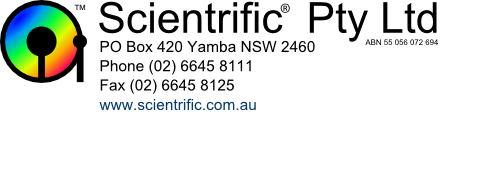
 ,
,